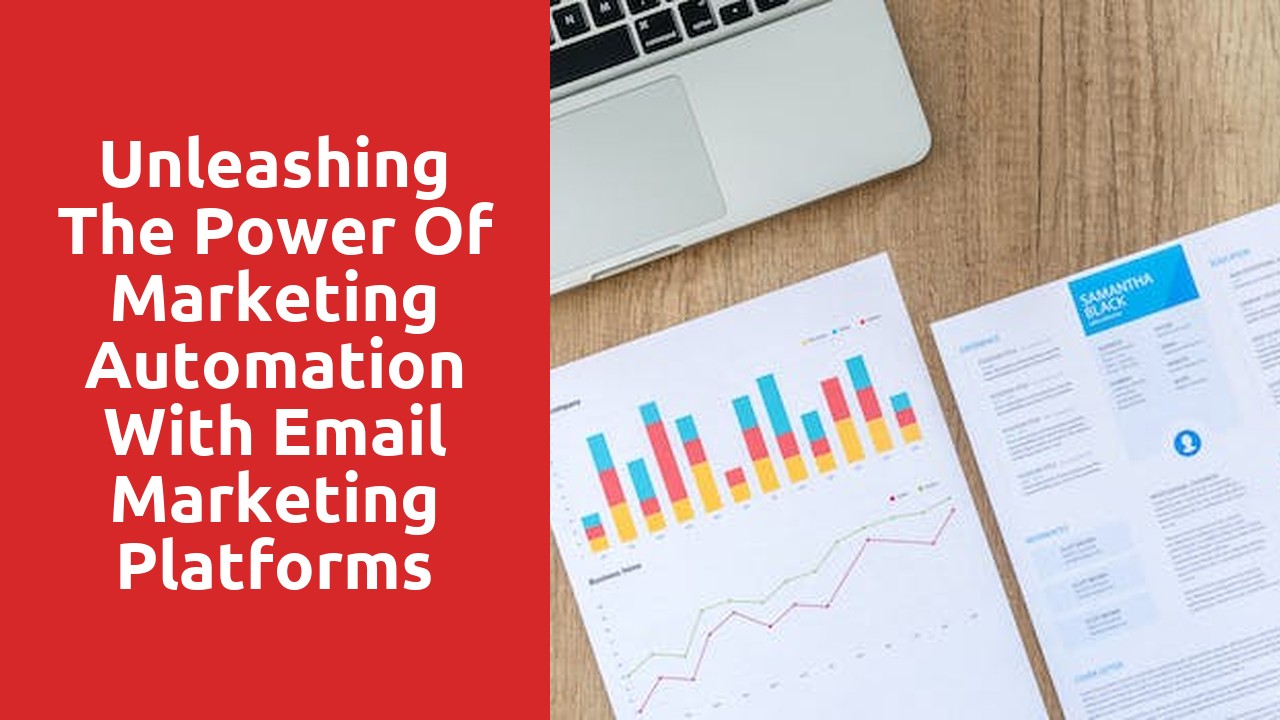Understanding the Power of Enterprise-level Email Marketing Platforms
Enterprise-level email marketing platforms have become increasingly powerful tools in the digital marketing landscape. These platforms offer businesses the ability to reach a large audience with targeted and personalized email campaigns. With advanced features like automation, segmentation, and A/B testing, these platforms enable businesses to create highly effective email marketing campaigns that drive engagement and conversions.
One of the key advantages of enterprise-level email marketing platforms is their ability to automate tasks and workflows. With automation, businesses can set up email campaigns to be sent at specific times or triggered by certain actions, such as a user signing up for a newsletter or making a purchase. This not only saves time and effort but also ensures that emails are sent at the most opportune moments. Additionally, segmentation allows businesses to group their subscribers based on various criteria, such as demographics, preferences, or past interactions. This allows for highly targeted and personalized email content, increasing the chances of engagement and conversion.
Leveraging Advanced Automation Tools for Personalized Campaigns
In today’s highly competitive business landscape, leveraging advanced automation tools for personalized campaigns has become increasingly crucial for success. With the rise of digital marketing and the ever-growing demands of customers, businesses are tasked with finding innovative ways to engage and connect with their target audience on a more individual level.
One of the key benefits of utilizing advanced automation tools is the ability to gather and analyze vast amounts of data. These tools allow businesses to track customer interactions, preferences, and behavior patterns, providing invaluable insights into their purchasing habits and interests. Armed with this knowledge, businesses can tailor their marketing campaigns to deliver highly personalized content and offers, increasing the likelihood of conversion and customer loyalty. Additionally, automation tools enable businesses to segment their audience based on various criteria, such as demographics and past purchase history, allowing for more targeted and relevant messaging. This level of personalization not only enhances the customer experience but also helps businesses establish a stronger brand presence and foster stronger connections with their audience.
Optimizing Email Deliverability for Maximum Reach and Engagement
In today’s digital age, email continues to be a powerful tool for businesses to reach and engage with their audiences. However, with the increasing volume of emails being sent every day, it’s becoming more challenging to ensure that your emails are actually being delivered to the recipients’ inboxes. This is where email deliverability comes into play.
Email deliverability refers to the ability of an email to successfully reach the intended recipient’s inbox, rather than being flagged as spam or ending up in the promotions or junk folder. It involves various factors, including your sending reputation, email authentication, and the quality of your email content. Optimizing email deliverability is crucial in order to maximize your reach and engagement with your audience.
To improve your email deliverability, one important factor to consider is your sending reputation. Internet service providers (ISPs) and email service providers (ESPs) closely monitor the reputation of senders to determine whether or not to deliver their emails. Maintaining a good sender reputation involves practices such as sending emails only to those who have given consent, regularly cleaning your email list to remove inactive or invalid addresses, and avoiding spam complaints. By focusing on building and maintaining a positive sender reputation, you can significantly increase the chances of your emails reaching the intended recipients’ inboxes, thus improving your overall reach and engagement.
Harnessing Data Analytics to Drive Effective Email Marketing Strategies
In today’s digital age, email marketing has become an essential tool for businesses to connect with their target audience. However, with the sheer volume of emails flooding inboxes each day, it can be challenging to cut through the noise and capture the attention of recipients. This is where data analytics comes into play. By harnessing the power of data, businesses can gain valuable insights into their audience’s preferences, behaviors, and engagement patterns, enabling them to create effective email marketing strategies that yield measurable results.
One of the key benefits of data analytics in email marketing is the ability to segment your audience. Instead of sending blanket emails to your entire subscriber list, data analytics allows you to divide your audience into specific segments based on demographics, past purchases, browsing history, and other relevant factors. By tailoring your email content to these segments, you can deliver highly personalized and relevant messages that resonate with your audience. This targeted approach not only increases open rates but also boosts click-through rates and conversion rates, leading to a higher return on investment for your email marketing campaigns.
In conclusion, harnessing data analytics in email marketing is no longer an optional strategy but a necessity in today’s competitive business landscape. By leveraging the power of data, businesses can gain a deep understanding of their audience, segment their email list effectively, and create highly personalized and engaging email marketing campaigns. As technology continues to advance and data becomes more accessible, it is crucial for businesses to stay informed and adapt their email marketing strategies accordingly. Only by utilizing data analytics can businesses truly unlock the full potential of email marketing and achieve their marketing objectives.
Unleashing the Potential of Segmentation and Targeting Capabilities
Segmentation and targeting capabilities have become vital tools for businesses in today’s hypercompetitive market. These advanced techniques enable companies to break down their customer base into specific groups, or segments, based on various criteria such as demographics, behavior, and preferences. Why is this important? Well, simply put, segmentation allows businesses to identify their most valuable customers and tailor their marketing efforts accordingly.
By understanding the unique characteristics and needs of each segment, companies can create targeted marketing campaigns that resonate with their audience on a deeper level. For example, a cosmetic brand targeting millennials may focus on social media advertising and influencer partnerships to reach this tech-savvy demographic. On the other hand, a luxury travel agency targeting high-net-worth individuals may opt for personalized direct mail campaigns or exclusive events to cater to their affluent clientele. Segmentation and targeting capabilities empower businesses to allocate their marketing resources more efficiently, increasing the effectiveness of their campaigns and ultimately, their bottom line.
Exploring A/B Testing and Multivariate Testing for Enhanced Performance
A/B testing and multivariate testing have become integral strategies for businesses looking to enhance their performance. These techniques allow companies to gather valuable data and insights, enabling them to make informed decisions and optimize their digital presence. By conducting experiments with different variations of a webpage or marketing campaign, businesses can effectively determine which elements are more appealing to their target audience. This empirical approach eliminates guesswork and allows for data-driven decision making, leading to improved performance and higher conversion rates.
One of the key advantages of A/B testing is its simplicity. This testing method involves creating two versions of a webpage or marketing message – the control, or current version, and the variation, where a single element is altered. By randomly showing each version to their audience, businesses can compare the performance of the two variations and conclude which version generates better results. This data-driven approach enables companies to make incremental improvements to their digital assets, leading to increased user engagement, higher click-through rates, and ultimately, improved performance. Additionally, A/B testing allows businesses to test various hypotheses and assumptions in real-time, enabling them to quickly adapt and optimize their strategies. Overall, A/B testing provides a cost-effective and efficient method for businesses to continuously improve their digital performance.














